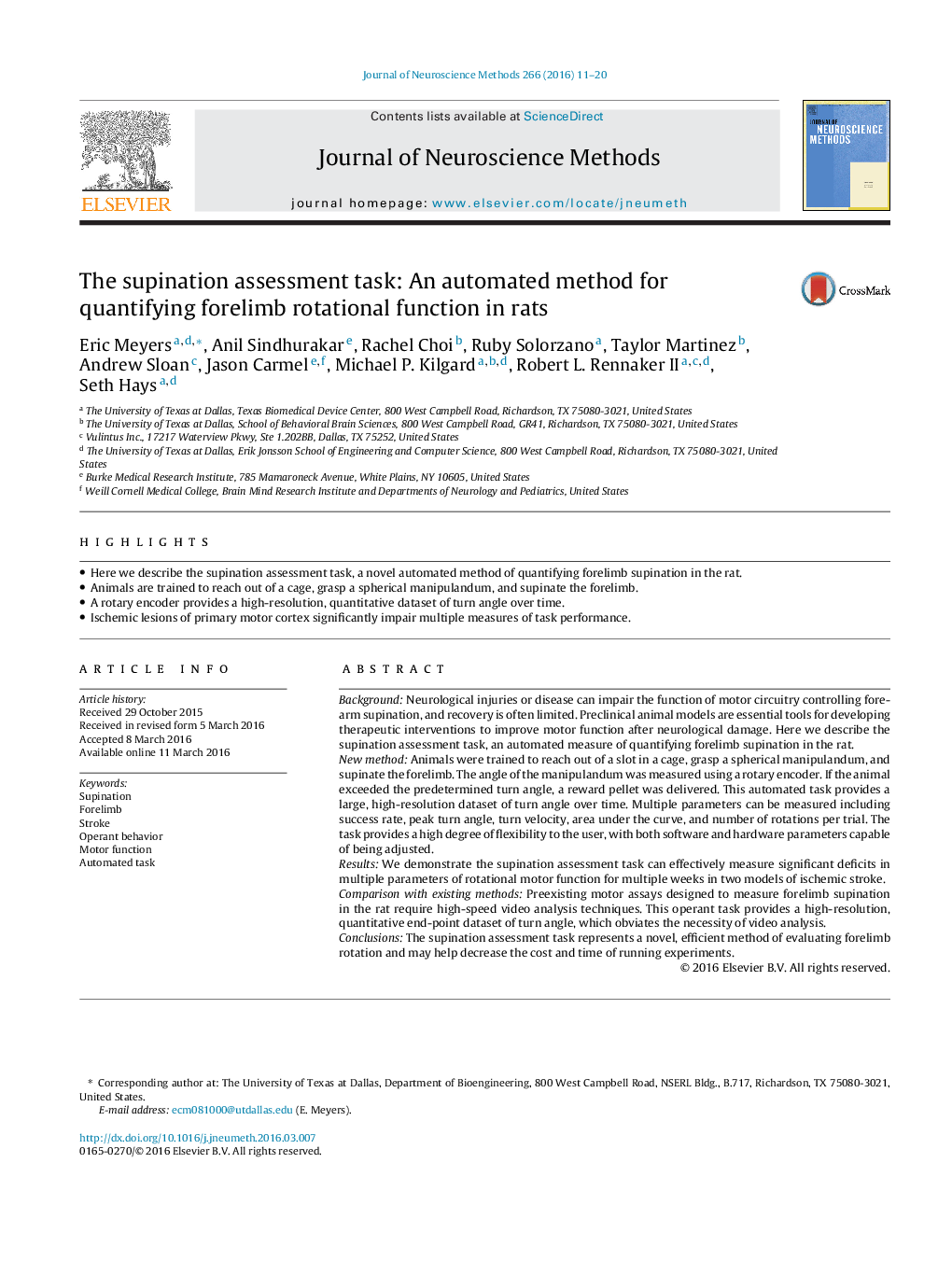| Article ID | Journal | Published Year | Pages | File Type |
|---|---|---|---|---|
| 6267711 | Journal of Neuroscience Methods | 2016 | 10 Pages |
â¢Here we describe the supination assessment task, a novel automated method of quantifying forelimb supination in the rat.â¢Animals are trained to reach out of a cage, grasp a spherical manipulandum, and supinate the forelimb.â¢A rotary encoder provides a high-resolution, quantitative dataset of turn angle over time.â¢Ischemic lesions of primary motor cortex significantly impair multiple measures of task performance.
BackgroundNeurological injuries or disease can impair the function of motor circuitry controlling forearm supination, and recovery is often limited. Preclinical animal models are essential tools for developing therapeutic interventions to improve motor function after neurological damage. Here we describe the supination assessment task, an automated measure of quantifying forelimb supination in the rat.New methodAnimals were trained to reach out of a slot in a cage, grasp a spherical manipulandum, and supinate the forelimb. The angle of the manipulandum was measured using a rotary encoder. If the animal exceeded the predetermined turn angle, a reward pellet was delivered. This automated task provides a large, high-resolution dataset of turn angle over time. Multiple parameters can be measured including success rate, peak turn angle, turn velocity, area under the curve, and number of rotations per trial. The task provides a high degree of flexibility to the user, with both software and hardware parameters capable of being adjusted.ResultsWe demonstrate the supination assessment task can effectively measure significant deficits in multiple parameters of rotational motor function for multiple weeks in two models of ischemic stroke.Comparison with existing methodsPreexisting motor assays designed to measure forelimb supination in the rat require high-speed video analysis techniques. This operant task provides a high-resolution, quantitative end-point dataset of turn angle, which obviates the necessity of video analysis.ConclusionsThe supination assessment task represents a novel, efficient method of evaluating forelimb rotation and may help decrease the cost and time of running experiments.
